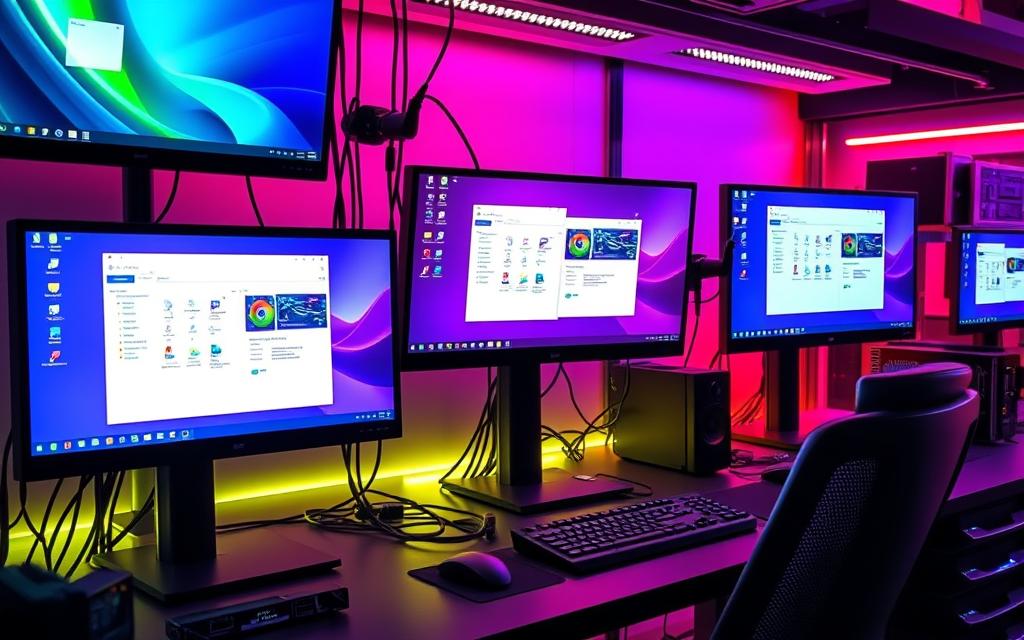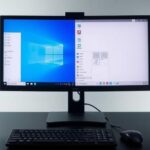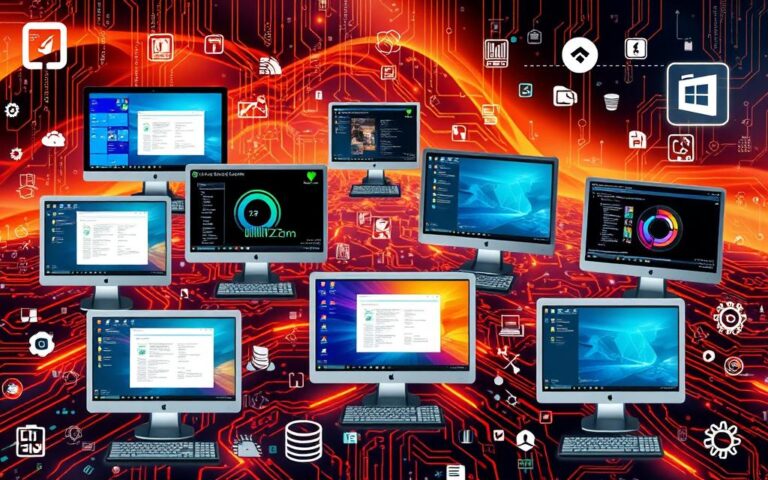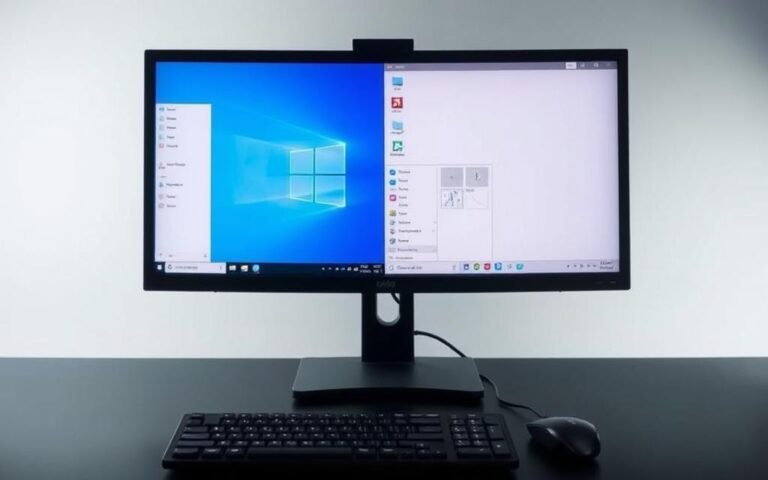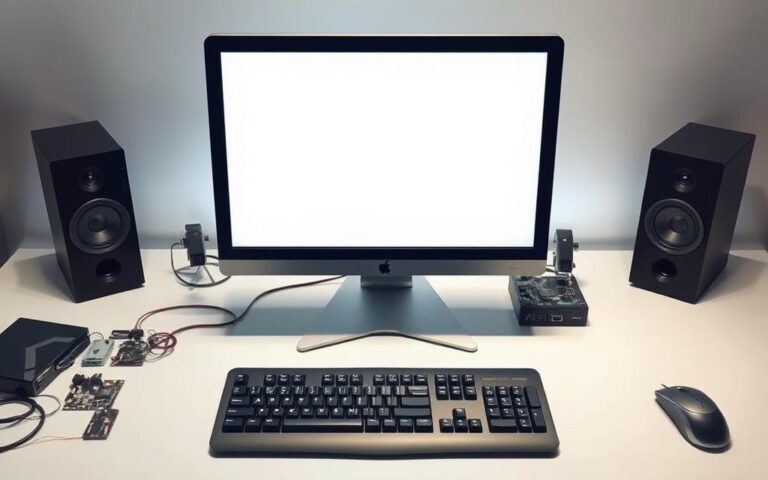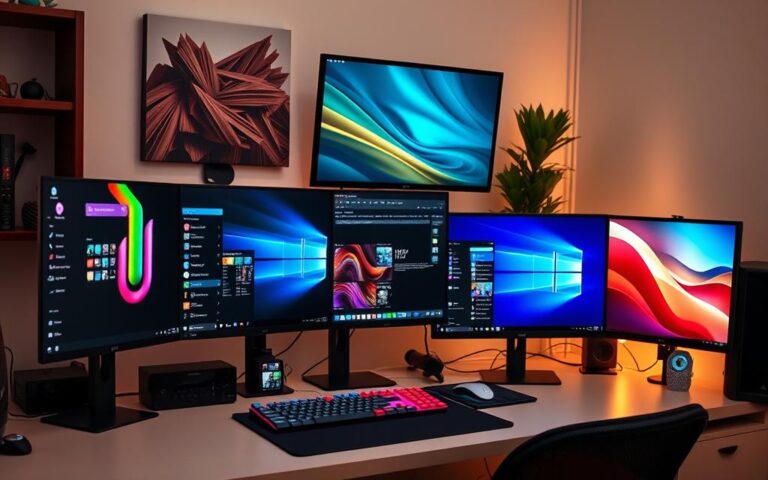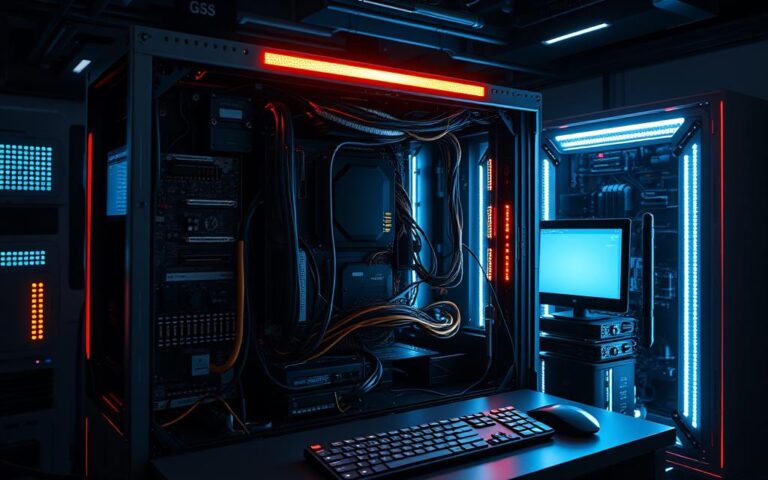Can a Computer Have Two Operating Systems?
In the world of tech today, having multiple operating systems on one computer is a big plus. Can a computer really manage two operating systems at the same time? Yes, it can. Systems can be set up to allow this, using methods like dual-booting and virtual machines.
Knowing about these options adds a lot of flexibility and personal touch. If you want to know more about installing operating systems, check out this helpful link. When setting up for dual-booting, you might need to do things like partition your hard drive or tweak BIOS settings.
Understanding Multiple Operating Systems
These days, many people use more than one operating system on their computer. An operating system is key software that manages computer resources. Knowing why people use multiple operating systems helps us understand how they set up their computers for different tasks.
Definition and Purpose
Having multiple operating systems lets users take advantage of different features. For example, someone might use Windows for gaming and Linux for coding. This can make their work more efficient and enjoyable.
Users often set up operating system environments with dual-booting or virtual machines. Dual-booting splits the hard drive so each system has its own part. Users then choose which OS to start. This method uses all the RAM for the chosen system, but setting it up correctly is essential.
Virtual machines, however, let you use multiple operating systems at the same time. They need software that works on Windows, macOS, and Linux. Even though they require more RAM, usually 8GB or more, they’re easy to set up. That’s why many people prefer them.
| Feature | Dual-Booting | Virtual Machines |
|---|---|---|
| Setup Complexity | Moderate | Simple |
| RAM Requirement | All available RAM for one OS | 8GB or more for efficiency |
| Software Costs | No extra cost beyond the OS | Typically under $50 |
| Speed | High for selected OS | Moderate due to resource sharing |
| Versatility | Limited to one OS at a time | High – run multiple OS simultaneously |
Methods of Running Two Operating Systems
Exploring how to run two operating systems can greatly improve your computer use. You can choose between dual-booting and virtual machines. Each method suits different needs, like specific software use or trying new settings.
Dual-Booting Explained
Dual-booting lets you run two operating systems on one computer by dividing the hard drive. This means creating special sections for each OS. With Windows 11 23H2’s arrival, many think about adding it to their current setup.
Setting up requires a few steps. Firstly, make a new partition, ideally around 25GB, for the second OS. This might mean making current partitions smaller. Remember to turn off Fast Boot, disable Secure Boot in BIOS, and change boot order. Tools like EaseUS OS2Go help make a bootable USB for the new OS setup.
Here’s a simple guide:
- Make a partition on the hard drive.
- Install the new OS on this partition, using the right media.
- Use a bootloader, like GRUB, to switch between the OSes.
In dual-boot setups, it’s key to handle file sharing well. A separate partition with a common filesystem, like FAT32 or exFAT, ensures easy file access in both systems. Be mindful of risks like data loss when partitioning or removing an OS. Always back up your data.
Using Virtual Machines
Virtual machines allow running an OS inside another one using software like VirtualBox or VMware. This method lets you use multiple OSes without rebooting. It’s prized for its flexibility, letting users test and use apps on different platforms easily.
Yet, dual-booting often beats virtual machines in performance because it accesses hardware directly. For tasks needing lots of power, like gaming or heavy software, dual-booting is better. The best choice depends on your needs and what you plan to do.
| Method | Advantages | Disadvantages |
|---|---|---|
| Dual-Booting |
|
|
| Virtual Machines |
|
|
can I have two operating systems on one computer
Yes, having two operating systems on one computer is possible. This is often done by dual-booting or using virtual machines. It lets users enjoy different systems for various tasks.
Some people use Windows and Linux together on their computer. They share the same hard drive. This means you need to set up your computer carefully. It involves managing partitions and boot choices. Dual-booting offers good performance because each system uses the hardware directly. However, you must reboot to switch between them.
Virtual machines let you run several systems at the same time. They are more flexible but might slow things down if you’re doing heavy tasks. Using virtual machines is great for testing new software or when different tasks need different systems.
Running more than one operating system can be tricky but rewarding. Whether you choose dual-booting or virtual machines depends on your needs. Taking the time to explore your options can make your computer work better for you.
Benefits and Drawbacks of Dual Operating Systems
Exploring dual operating systems shows both advantages and disadvantages. Each choice has its own pros, cons, and risks. These play a key role in managing computing needs well.
Advantages of Dual-Booting and Virtualisation
The advantages of dual operating systems include great flexibility. Users can switch between systems to meet the needs of different tasks. This boosts performance. Also, access to various environments lets users work with system-specific software. This is good for tech experts, developers, and hobbyists.
Virtualisation also offers a significant benefit. It allows running several applications at once in different virtual environments. This does not affect the main system. It is useful for developers doing cross-platform tests and for educational uses.
| Advantage | Description |
|---|---|
| Flexibility | Easy switching between OS based on task needs |
| Cost-Effectiveness | Reduced need for multiple machines to run different OSes |
| Security Enhancement | Separated environments can enhance overall stability and security |
| Performance | Dedicated resources can improve application performance |
| Testing and Development | Facilitates easier development with cross-platform testing |
Disadvantages and Risks
Despite the benefits, dual-booting has disadvantages and risks. Users may find setup and maintenance complex. Without care, there’s a risk of data loss. Thus, making backups and careful planning before installing is crucial. Compatibility problems with drivers and hardware may also occur, affecting usability.
The risks of dual-booting include extra strain on system resources. Boot problems might happen because of conflicts between operating systems. This might lead to cases where systems cannot boot. Such complexities might put off users who are not very tech-savvy.
| Disadvantage | Risk |
|---|---|
| Technical Complexity | Challenges during setup and maintenance |
| Data Loss | Potential risks without proper backups and installation checks |
| Compatibility Issues | Problems with drivers and hardware support |
| Resource Demands | Increased resource consumption may slow performance |
| Boot Problems | Conflicts between operating systems can lead to unbootable systems |
Conclusion
This article has shown that computers can indeed run Windows and Linux together. This can be done through dual-booting or virtualisation. Each method has its own benefits and drawbacks. It depends on what the user needs and knows. Today, many find value in using more than one OS. They do this for special software, to try new systems, or to boost their computer’s usefulness.
But, it’s key to know the risks these setups might bring. Issues with hardware and the risk of slowing down the OS are common worries. Proper steps, like following good dual-booting tips and virtual guidelines, can lower these dangers. Planning how resources are divided, knowing how much storage is needed, and keeping enough swap space are key for a smooth dual OS setup.
In the end, if users take the right precautions, they can enjoy the benefits of dual operating systems. This opens up new chances for better work and filling different tech needs. Getting into dual-booting or virtualisation can lead to exciting opportunities, making computing more productive and versatile.
FAQ
Can I run multiple operating systems on my computer?
Yes, you can run many operating systems on one computer. You might use dual-booting or virtual machines for this. These methods let you switch between different operating systems as needed.
What is dual-booting?
With dual-booting, your computer’s hard drive has separate partitions. Each one holds a different operating system. When you start your computer, you can pick which OS to use. This way, you get to access various features and apps.
How do virtual machines work?
Virtual machines make it possible to run many operating systems all at once on one computer. They use software to create a setup that acts like separate computers within your main operating system. This gives you lots of flexibility.
What are the advantages of having two operating systems?
Having two operating systems lets you use specific software for each one, boosts your productivity, and allows testing of apps safely. Dual-booting and virtualisation each have their own pros depending on what you need.
Are there any drawbacks to dual-booting?
Yes, dual-booting has some downsides. You have to restart your computer to switch systems, which can be a hassle. It also needs you to partition your drive carefully to avoid issues. Poor management could lead to losing data.
What should I consider when installing two operating systems?
Think about your computer’s specifications, available hard drive space for partitions, and each OS’s needs when installing two systems. Getting help from tech support might also be a good idea to ensure a smooth setup.

